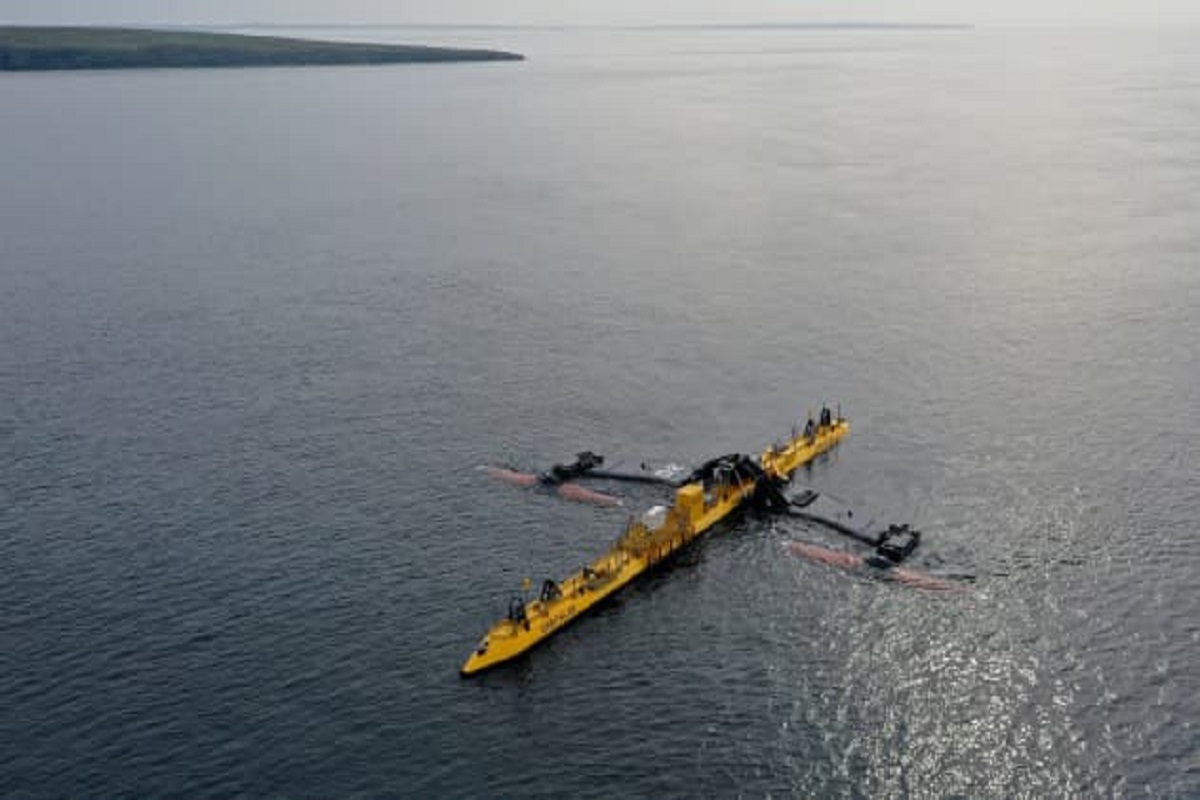- Orbital Marine Power announces that it received $9.64 million in funding for its O2 tidal turbine.
- The SNIB contributed £4 million, while 1,000 investors contributed the remaining $5 million.
- The European Marine Energy Centre (EMEC) is a hub for tidal and wave energy projects.
Another development for the developing tidal power industry came on Monday with the announcement by the Scottish engineering company Orbital Marine Power that it had received £8 million ($9.64 million) in funding to “support the continuous operation” of its O2 tidal turbine.
Orbital Marine Power announced that the Scottish National Investment Bank, which was established by the Scottish government in November 2020, has contributed £4 million. Through more than 1,000 individual investors, Abundance Investment provides the remaining £4 million.
According to Orbital, the long-term sale of the turbine’s electricity, which is anticipated to produce about 100 gigawatt hours of clean, predictable energy delivered to the UK grid or hydrogen electrolysers throughout the course of the project, would be used to pay off the debt facilities.
[embedpost slug=”dombrovskis-the-first-round-of-eu-funding-to-ukraine-will-arrive-this-summer/”]
Orbital Marine Power claims that their 2-megawatt O2 has a 74-meter hull construction and weighs 680 metric tonnes. The O2, which has 10-meter-long blades and began generating electricity for the grid last year, is referred to by the business as “the most potent tidal turbine in the world.”
The SNIB’s investment in Orbital, according to Executive Director Mark Munro, is consistent with the organization’s “objective to foster domestic innovation and the just energy transition.”
In the effort to reach net zero, Munro continued, “The company’s distinctive and scalable approach to tidal stream energy has a significant role to play.”
Scotland has a long history of involvement in the extraction of oil and gas from the North Sea, but in recent years it has also emerged as a hub for businesses and initiatives centred on tidal power and marine energy in general.
The European Marine Energy Centre is located in Orkney, an islands in the waters north of mainland Scotland. Developers of wave and tidal energy can test and evaluate their technology at EMEC in the open ocean. On an EMEC site is the O2 turbine for Orbital.
The energy technology supplier TechnipFMC, which is listed on the New York Stock Exchange, announced a strategic investment in Orbital Marine Power last year.
Tidal and wave energy installations increased dramatically in Europe in 2021 as deployments in the ocean energy industry returned to pre-pandemic levels and investment increased significantly.
In comparison to merely 260 kilowatts in 2020, Ocean Energy Europe reported in March that 2.2 megawatts of tidal stream capacity was added in Europe last year. According to OEE, 681 kW of wave energy was installed throughout Europe in 2021, a threefold increase over 2020.
Globally, 3.12 MW of tidal stream capacity was added in 2021, while 1.38 MW of wave energy went online.
Despite the excitement surrounding the promise of marine energy, tidal stream and wave projects are still quite tiny in scope when compared to other renewable energies.
According to statistics from the trade group WindEurope, 17.4 gigawatts of wind generating capacity were installed in Europe alone in 2021.
[embedpost slug=”tidal-stream-power-generates-electricity-and-drives-for-net-zero/”]





















